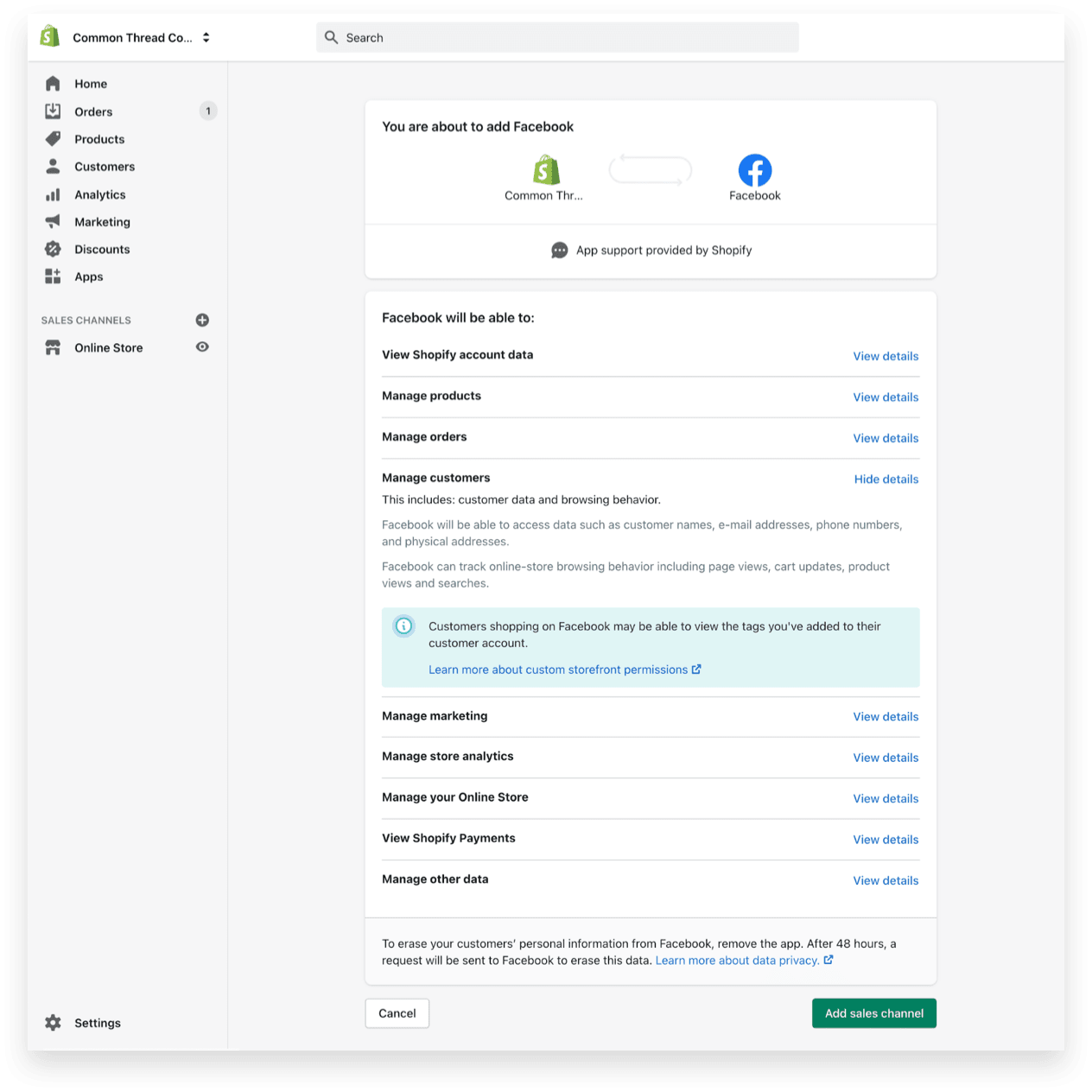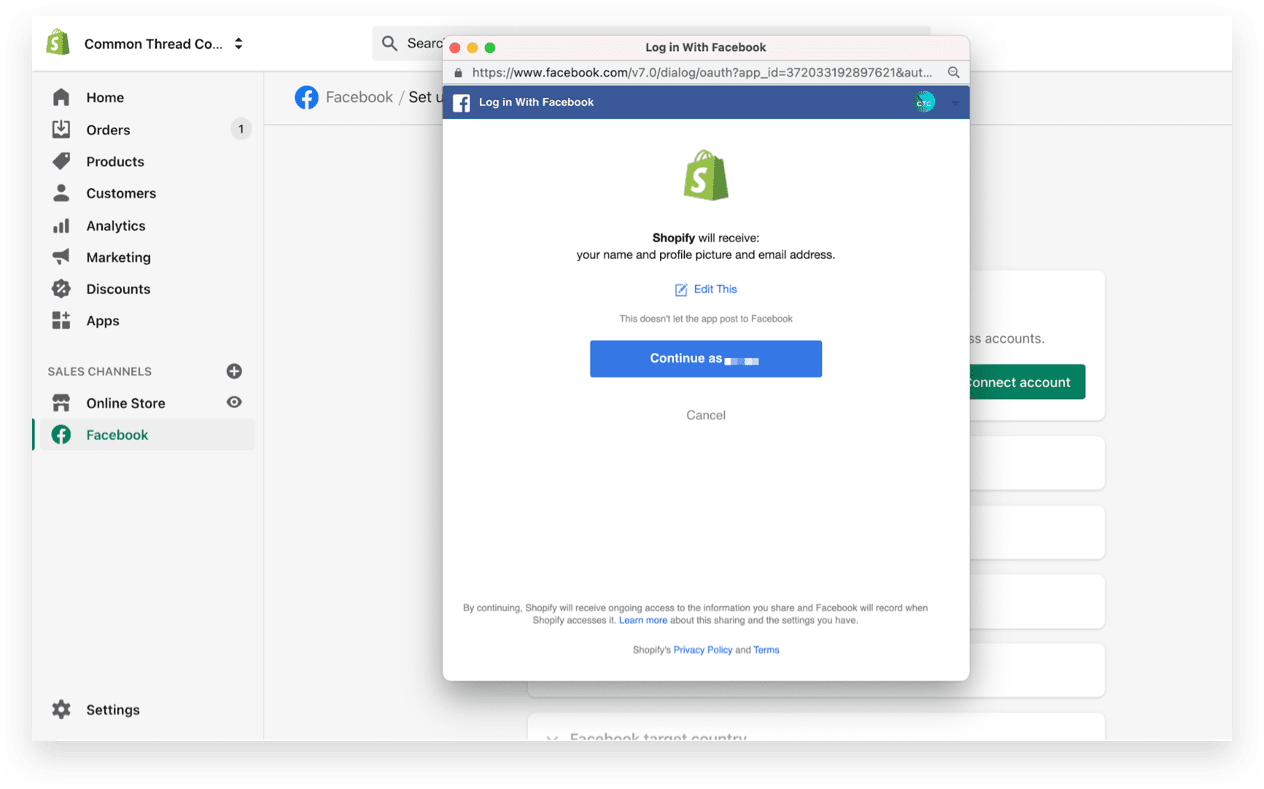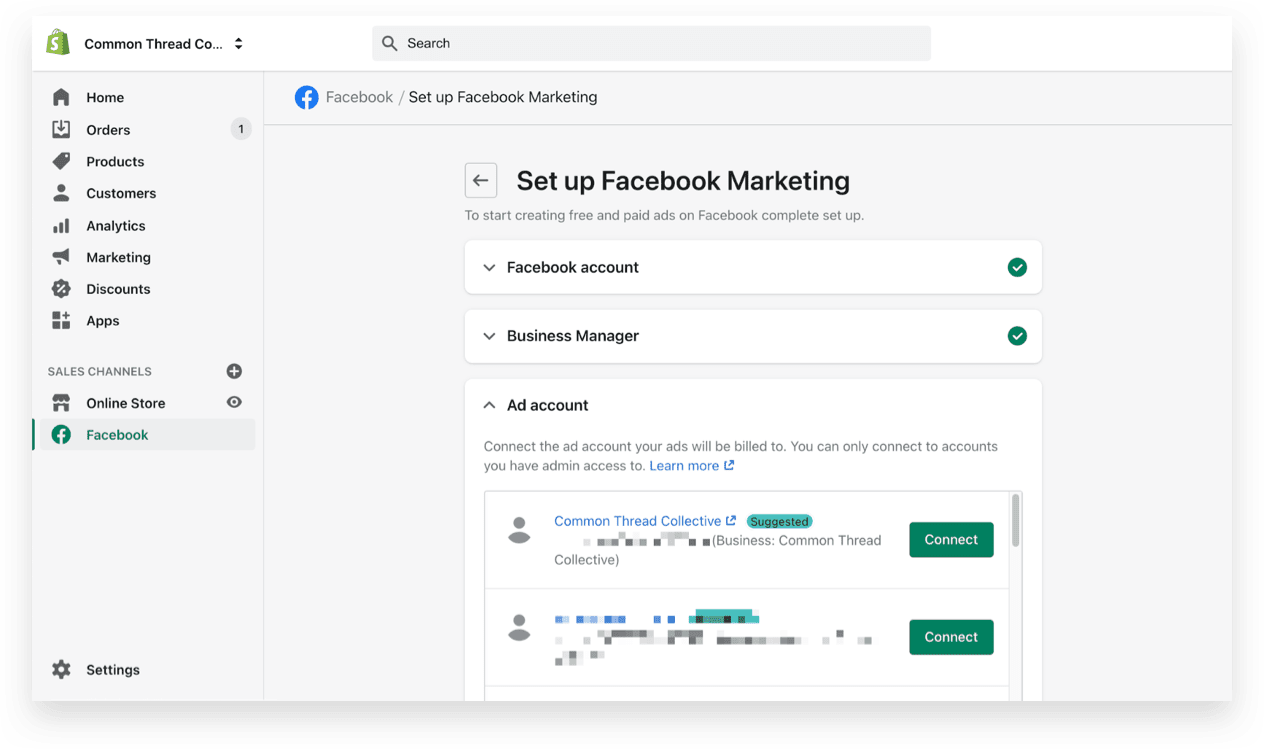“News of my death has been greatly exaggerated [maybe].”
— Signed, Facebook Attribution and Tracking
The changes came fast. Hit hard. And are far from finished.
Over the past two weeks, a host of updates descended upon Facebook; chief among them: Facebook removing its default 28-day attribution window and Apple’s iOS 14 App Tracking Transparency (ATT) Framework.
If you’re feeling overwhelmed about how to make decisions at a time when reporting is incomplete, inconsistent, or missing …
You are not alone.
To guide you into the new world of Facebook attribution, we’ll cover three solutions and one template you can put to work immediately:
- Combine Google Analytics with Facebook Attribution: Free Template
- Integrate Facebook Conversions API & Your Shopify Store
- Setup Google Tag Manager Server Side CAPI
Why the ecosystem is changing
Once iOS 14 goes into effect, Apple users will receive the ATT Prompt — giving them the choice to opt-in or opt-out of data tracking.

Previously. the Facebook Pixel could track iOS users along their conversion paths, coordinating in-app ad impressions and clicks to onsite activity. Now, that data will be severely limited. Facebook has predicted as much as a 50% drop in Audience Network revenue and that “small businesses could see a cut of over 60% of website sales from ads.”
Meanwhile, Facebook’s attribution model — which determines how “credit” is assigned to various touchpoints for a conversion — is shifting from a 1-day impression + 28-day click window … to a day-of conversion model with a 1-day impression + 7-day click window.
Facebook advertising will:
- Record day-of conversion events for all purchases
- Be limited to eight events per domain, ranked manually
- Only track the top-ranked event for users that opt-out of ATT
- Replace the 28-day click attribution window with a 7-day window
- Model advertising activity through Aggregated Event Measurement
1. Combine Google Analytics with Facebook Attribution: Free Template
To provide stability and make informed buying decisions, for the next two weeks we’ll be relying on Google Analytics purchase data captured from UTMs.
This data will not be affected by Facebook’s changes. It will, however, be last-click attribution; meaning, lower reported ROAS than the old 28-day default.
For clients as well as our in-house brands, we’ve pulled month-by-month 2020 data from Google Analytics and Facebook. We recommend you do the same.
To help, we’ve replicated the Historical Data Template our teams are using.

After you enter your own data, Facebook and Google Analytics ROAS can then be compared. This will give you clear targets to aim at within Google Analytics based directly on your own historical data.
For example, in my video walkthrough of Bambu Earth (one of the brands Common Thread Collective owns and operates) you’ll see Column P calculate “ROAS: Google Analytics vs Facebook Full Attribution.” Those percents from Column P will also give you, “What that translates to in GA.”

In addition, you’ll see a month-over-month chart automatically generated to compare those metrics visually.

This model will help future-proof your attribution as we learn together what reporting in Facebook will look like and as new regulations and changes continue to emerge.
If data isn’t populating within Facebook Ads Manager …
That’s likely because the “Attribution Setting” column is either set to the old 28-day default or because the ad sets within the campaign have “Multiple Attribution Settings.”

- Select any Active campaigns that aren’t showing 7-day click
- Go to the Ad Sets tab
- Filter by Active
- Turn the ads off then back on
- And Reset Ads Manager in top right

2. Facebook Conversions API & Shopify Integration
What Is Facebook Conversions API?
The Facebook Conversions API (CAPI) — previously known as Facebook Server Side API (SSAPI) — is an event-tracking system that operates on the server sides of both your ecommerce website and Facebook.
Because CAPI runs at the server level, rather than within web browsers, it relies on neither cookies nor the Facebook Pixel. As if there weren’t enough acronyms in this article, server side APIs are sometimes referred to as S2S, or “server to server.”
As Facebook explained to us:
Conversions API will enable the next generation of personalized advertising on Facebook, for all data that businesses and platforms have consent to share.
Advertisers that adopt Conversions API will maximize advertising performance amid an evolving ecosystem, benefitting from:
- Explicit, intentional control over how and what data is shared with advertising platforms
- Customer Journey Insights for interactions that occur both on and off a businesses website
- Access to personalized advertising features and functionality that will be built for Conversions API (e.g., Deep Funnel Optimization)
Limitations of Facebook Conversions API
All data from Facebook CAPI for iOS 14 users will be governed by Aggregated Event Measurement. Server-side setups still fall under Apple’s privacy requirements and terms of service (ToS), impacting the measurement, tracking, and optimizations of mobile web events.
ATT will not allow full coverage of events from iOS 14 users. In-product annotation will communicate when a metric is partial — essentially, pop-up messages in Ads Manager.
Shopify’s Facebook CAPI Integration
Shopify’s CAPI integration is built explicitly for ecommerce data; the integration passes purchase-only conversion information back to Facebook.
Pros:
- Simple low-tech implementation server side (SS) purchase tracking for FB CAPI. Anyone can do it!
- Likely to have heavy support from Shopify to ensure it remains a solid integration with Facebook
- No additional cost
Cons:
- Limited to purchases events only
- Unlike the Pixel, it can’t be customized
- No ability to reset cookie from 7-day expiration
- Not compatible with third-party payment gateways
- No debugging if there is an issue
How to Set Up Facebook CAPI on Shopify
- Log into Shopify and navigate to the Facebook channel within the App Store; click “Add app”

- You’ll be redirected to your Apps page inside Shopify; click “Add sales channel”

- Connect Facebook CAPI from within the Facebook Sales Channel by clicking “Continue setup” under Facebook Marketing

- Connect your personal Facebook account or the account of someone with Admin permissions to your Facebook Ads Manager and Page

- Follow the Facebook prompts until a green checkmark appears next to Facebook account ✅



Through the remaining drop-downs, connect your …
- Business Manager account

- Ad account

- And Facebook Page

- Under Data sharing, choose the “Maximum” option which includes Conversions API (CAPI). Select the Facebook Pixel that matches the account you’re using. Note: be sure to match the name and number.

- Click “Accept” and “Finish setup”

-
Validate your setup by …
Option one: running a test within Facebook’s Data Sources > Test Events > Test Server Events.

Option two: monitoring Purchase activity within the Overview.

There are no negative effects to adding the Shopify Conversions API. It will be deduped (de-duplicated) with your regular pixel events and not cause any over reporting. It will simply provide a “lift” in purchase events that we wouldn’t normally see because of ad blockers.
Want to enable Instagram and Facebook’s native checkout as well?
You’ll need a few more pieces of information for this process:
- Store details
- Tax ID numbers
- Shipping information
- Return policy
- Payment information
Once you have all that collected, head over to Shopify’s Setting up Checkout on Instagram:

3. Google Tag Manager (GTM) Server Side CAPI
Shopify’s integration with Facebook CAPI only tracks purchases. If you want to pass information for other onsite activity back to Facebook, that’s where you’ll need Google Tag Manager.
Pros
- Tracks all GTM events, not just purchases
- Fully customizable parameters for all events
- Ability to reset 7-day cookie expiration for users
- Can send additional user parameters and custom data parameters directly to Facebook
Cons
- Requires small investment to implement and maintain
- Is not a one-click integration, will take time and testing
- Far more technical than even a GTM web pixel integration
Do you want GTM Server Side CAPI set up?
Given the technical hurdles and nuances, we’ve partnered with Elevar to help our clients and in-house brands.
Contact Brad Redding to book a consultation (that link is all set up to email Brad, complete with an acronym-heavy subject line 😉).
Or, use this custom link to get 20% off the basic plan shown below.

The Future of Facebook Advertising Attribution: Hopeless?
As a manager of half the media buyers at CTC, I understand how impactful and scary these changes are. It’s as if you’ve been told to go fish … blindfolded when you’re used to having all the latest fishing radar technology at your fingertips.
But is Facebook attribution and tracking dead? No.
Will we ever get back to the good ‘ol days of low CPMs and unlimited data? Also, no. If 2020 taught us anything, it’s that nothing is certain. The good news is that we are all in the same boat. And no, that boat is not the Titanic.
As more unknown changes and challenges are thrown at us come back to these two questions:
- What do you know for sure? (MER, GA data, on-platform FB data)
- What can you control? (creative, budgets, bids)
Anchor yourself in those two points. Monitor results. Adapt. Repeat. Look the challenges dead in the eye and you’ll win.
We won't send spam. Unsubscribe at any time.













